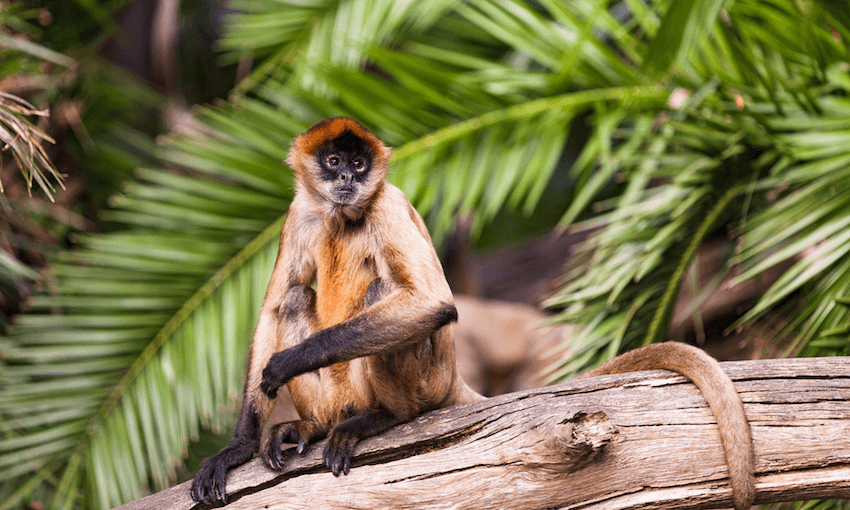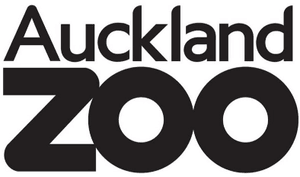Auckland Zoo director Kevin Buley believes the majority of zoos around the world should be closed. However, he says Auckland Zoo is one of the few good ones. He showed Alex Braae around the zoo and explained why he believes the animals here live better lives than they would in the wild.
A spider monkey carrying a baby on her back is a simultaneously breathtaking and nerve-wracking sight. At the top of a tree, it’s spindly but sure arms flung out, the monkey swings like a pendulum to push itself forward. Tiny fingers dig into her fur, and a thin tail is wrapped around the mother’s tail as they sail through the air. They’re literally metres off the ground, with nothing but air beneath them, and they look like they don’t have a care in the world.
A parent and her toddler are watching them. The child squeals with delight and mum looks no less enthralled. It’s these sorts of scenes that are one of the biggest reasons why Auckland Zoo director Kevin Buley says zoos still matter.
“The most important thing we can do is connect people with wildlife. In an urban environment, that’s about bringing wildlife to people, and showing them how amazing it is, and actually getting them to care, when otherwise they might not,” he says as we watch the two sets of families.
Listen to episode one of Good Ancestors, a four-part podcast that examines the role of children in our planet’s future. Episode one sees hosts Noelle McCarthy and John Daniell asking eight-year-olds at the zoo the hard questions about climate change.
Zoos occupy a strange place in our cultural psyche as people have become increasingly more sensitive and aware to cruelty against animals. It was only a few decades ago that chimpanzees were being dressed up for tea parties at some zoos, including Auckland’s.
More recently, there was the news storm around the zoos of New Zealand when English actor Martin Clunes, who now makes nature documentaries, described them as “awful places for such a modern country” in an interview with the UK’s Telegraph. “I wish they’d just shut all the bloody zoos, let those animals die; the ones that can’t be rehomed.”
The argument against zoos is heavily based on the idea of captivity – that animals have the joy of life strangled out of them by being locked in cages. Animals should be allowed to live in the wild, or in protected reserves, where they can be in a state of nature.
But the wild, to put it bluntly, just doesn’t really exist as it does in the popular understanding any more. Humans are entirely at fault, through rapacious destruction of animals’ habitats and ecosystems. That messaging is all over Auckland Zoo. Almost every sign with information about an animal includes details on where its home should be, except those homes are invariably under threat. Even the creators of popular images of wildlife like Planet Earth‘s Sir David Attenborough now routinely note how much the animals on screen are being squeezed out of existence.
It puts Auckland Zoo – a not-for-profit organisation – in a position where they have to become one of the last lines of defence for these species. “The only reason we exist is as a wildlife conservation organisation,” says Buley. “People say things like ‘if we’re not careful, we’re going to go into the sixth mass extinction event’. But nah, we’re already in it, given the rate we’re losing species. Even in New Zealand. And it’s all human caused.”
That’s where zoos – good zoos – have an essential role in conservation. The crisis of our ever-shrinking and fragmented animal populations require intensive management and urgent intervention. The Auckland Zoo is qualified to do this inside and outside its walls. Its staff are experts at managing animal populations and their skills are in hot demand. In the past year alone, 84 Auckland Zoo staff have worked across 30 conservation projects for animals and their habitats around New Zealand.
This year, the Department of Conservation’s Kākāpō Recovery team, which manages the world population of kākāpō (total 147) across three pest-free islands, is experiencing the biggest breeding season ever. There are 15 Auckland Zoo veterinary and bird specialists helping with monitoring, hand-rearing, transporting chicks, and chick fostering to wild kākāpō mothers. Back at the zoo, its ectotherms team are caring for and managing the entire population of New Zealand’s ‘Nationally Critical’ cobble skink.
It’s grim, but arguably, more necessary than ever to have zoos as a bulwark against extinction, provided these zoos are actually among the few good ones. Take orangutans for example. Auckland Zoo will next year open a new, larger South East Asia area that will be home to these great apes along with Siamang gibbons, Sumatran tigers, otters, Asian crocodiles and other reptiles and fish. But wouldn’t it just be better for them to be in the wild?
Well, no. Because their habitat, one of the most bio-diverse places on earth, has been utterly smashed to pieces. There’s barely any wild for them to go back to. Conservationists estimate 80% of the forests in Indonesia and Malaysia where they could have lived has been lost in the space of 20 years through a combination of massive amounts of logging, and the development of palm oil plantations in their wake. It’s hard to give scale to just how big a loss of habitat that is, but imagine that over a similar space of time, every bit of land in New Zealand south of Hamilton vanished. Even New Zealand’s conservation estate only survives now because of active human intervention. Our activities both consciously and unconsciously destroy habitats whereas active conservation policies are a defensive measure against both.
And just like the Hobbesian idea of the nasty, brutish and short state of nature, life for animals in the wild is most often nasty, brutish and short. Over and above the famines caused by the destruction of their ecosystems, a tiny moment of bad luck can condemn an animal to a horrible death. A lion who gets kicked hard in the jaw while trying to take down a zebra is almost certain to die of starvation because they can’t hunt or eat. And of course, if the lion is successful, the last moments of the zebra’s life will be the pain of being torn to pieces. The life of an animal in the wild is one of incredible stress, and we can’t really know if they prefer it. But what we do know is that at good zoos, with proper veterinary care available, animals are much less likely to die from preventable illnesses and injuries.
Buley says he recognises that for some people “there’s still potentially this residual guilt about visiting a zoo that stems from an idea that animals in zoos don’t have happy lives”. However, he says in a good zoo, and at Auckland Zoo, every aspect of the animal’s life ends up being carefully considered.
This includes their habitat, what they eat and how it gets delivered to them, the social structure of their group, and how the impact of people upsetting their lives can be minimised. Buley describes it as being about “creating an environment that’s stimulating without being oppressive.”
“From an animal perspective, good design gives animals the opportunity to be away from people or visitors if they want to, or even away from each other. They can be out of the sun, or the rain, or the wind. It gives them choices. Good design is about an animal choosing the environment that will make it feel most comfortable.”
While looking at the meerkats, I note that while it’s completely peaceful, and there are barely any people around, a couple of them are still standing guard, alert and razor sharp. “That’s what we look for, that’s natural behaviour. If you’ve got meerkats that aren’t interacting as a group and demonstrating social behaviour, then we’ve got to investigate that.”
But above all, a good zoo is about instilling within people love and concern for animals that will make us look beyond the zoo. The few that get it right are now more important than ever for conservation. At the rate we’re destroying ecosystems, some wild species will soon only exist in zoos. Auckland Zoo’s goal is to help prevent species from going extinct, in the hope that one day they’ll be able to be returned to restored habitats.
And if people coming through the zoo see an animal that takes their breath away, they may stop to wonder why it should be that the animal’s wild cousins are under such sustained attack. And like the staff at Auckland Zoo, they may then advocate for the relentless destruction of the natural world to end.
This content was created in paid partnership with Auckland Zoo. Learn more about our partnerships here.

